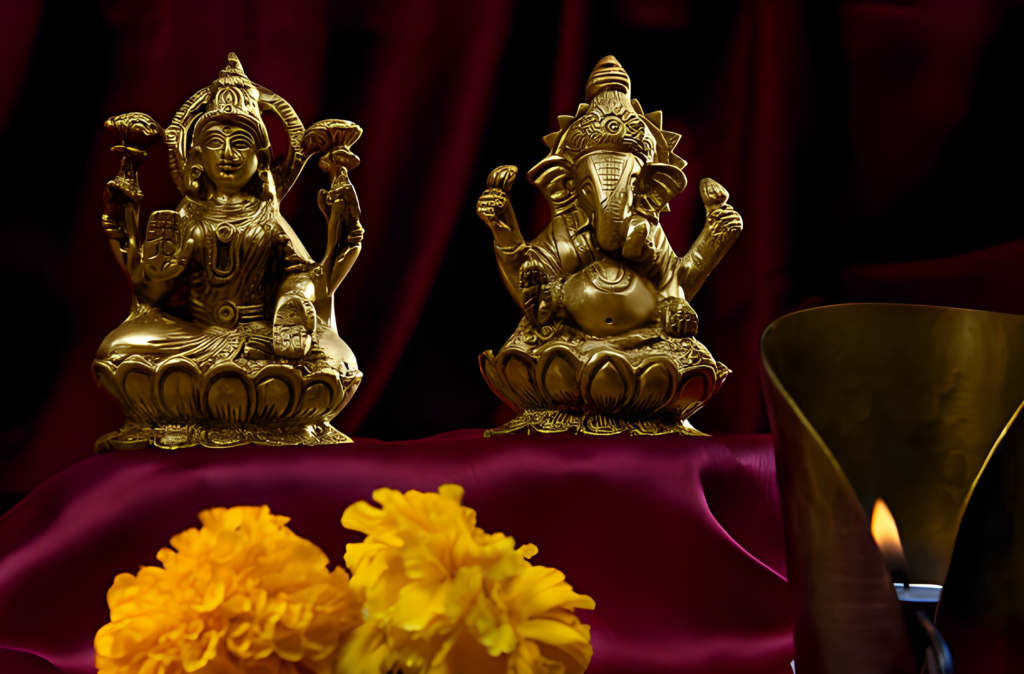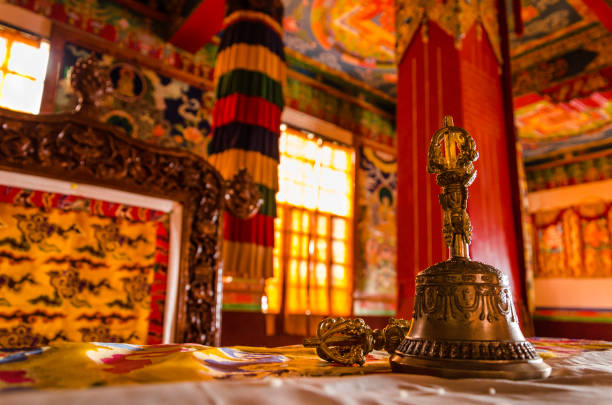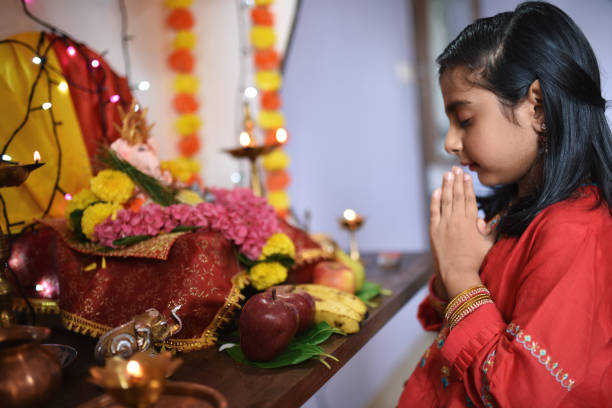The pooja room, a haven for prayer and reflection, deserves to be designed with intention and care. It’s a space that transcends mere aesthetics, fostering a connection with the divine and shaping the spiritual atmosphere of your home. Whether you have a dedicated room or a designated corner, here’s a guide to help you design a pooja room that inspires serenity and uplifts your soul.

6 Powerful Steps to make your Pooja Room looks more SACRED !!
1 Traditional:

Embrace rich colors, intricate carvings, and brass or wooden mandirs. Think warm lighting and calming chants.
Modern: Opt for sleek lines, minimalist designs, and natural materials like marble or wood. Consider built-in units or floating shelves for a clutter-free look.
Fusion: Blend traditional elements with contemporary touches. Use textured fabrics, geometric patterns, and soft lighting to create a unique ambiance.
Considering Vastu:
2 Direction:

Ideally, the pooja room should face northeast. East or north are also considered auspicious.
Placement: Avoid placing the pooja room below a toilet or bedroom.
Idol Positioning: Ensure idols face east or north and are not directly opposite each other.
Setting the Stage:
3 Flooring and Lighting:

Flooring Opt for marble, granite, or wood for a clean and sacred feel. Consider adding a rug for warmth and comfort.
Walls: Paint in calming colors like white, cream, or light blue. You can also use textured wallpapers or murals depicting religious scenes.
Lighting: Use soft, diffused lighting to create a peaceful ambiance. Consider diyas, lamps, or recessed lights.
The Essentials:
4 Mandir/Shelf: Choose a mandir or shelf that suits your style and space. Ensure it’s sturdy and large enough to accommodate your idols and puja items.
Idols: Select deities that resonate with you and your family. Ensure they are made of consecrated materials and placed with respect.
Puja Items: Include essential items like diyas, incense holders, bells, aarti plates, and священные тексты. Arrange them neatly and keep them clean.
Adding Personal Touches:
5 Fresh Flowers: Place fragrant flowers like marigolds or lilies to add beauty and freshness.
Religious Paintings/Murals: Enhance the spiritual氛围 with sacred art that inspires you.
Mantras/Quotes: Display inspirational quotes or mantras that resonate with your beliefs.
Personal Touches: Add small items that hold meaning for you, like prayer beads or a family heirloom.
Remember:
6 Cleanliness: Maintain a clean and clutter-free space to show respect and create a serene atmosphere.
Respect: Treat the pooja room with reverence. Remove shoes before entering and maintain a mindful presence.
Personalization: Let your pooja room reflect your unique beliefs and preferences. It’s a space for you to connect with the divine in a way that feels most meaningful.
By following these guidelines and infusing your own personal touch, you can design a pooja room that becomes a sanctuary for peace, reflection, and spiritual growth.
Additional Tips:
Consider adding a small window for natural ventilation and light.
Invest in comfortable seating for longer prayers or meditation.
Play calming instrumental music or chants to enhance the ambiance.
Use fragrance diffusers with essential oils like sandalwood or lavender to create a serene atmosphere.
Regularly cleanse the space with incense or священные тексты.
May your pooja room be a source of inspiration, solace, and spiritual connection for you and your loved ones.
Pooja Room Design: Questions & Answers
Planning & Style:
Q1: I have limited space. What are some space-saving pooja room ideas?
A: Consider wall-mounted shelves, foldable mandirs, or utilizing corners effectively. Opt for minimalist designs and multi-functional furniture.
Q2: What are some popular pooja room design styles?
A: Traditional, modern, fusion, minimalist, temple-inspired. Choose one that resonates with your taste and complements your home’s overall style.
Q3: Should I follow Vastu principles for my pooja room?
A: While not mandatory, Vastu offers guidelines for auspicious placement and direction. Consider consulting an expert if you desire a Vastu-compliant design.
Essentials & Practicalities:
Q4: What are the essential items I need for my pooja room?
A: Mandir/shelf, idols, diyas, incense holders, bells, aarti plates, священные тексты, and other puja samagri specific to your practices.
Q5: How do I choose the right idols for my pooja room?
A: Select deities that hold personal significance or resonate with your family’s traditions. Ensure they are made of consecrated materials and treated with respect.
Q6: What are some tips for maintaining a clean and organized pooja room?
A: Regularly dust and wipe surfaces, clean puja items, and store unused items neatly. Consider using organizers and designated storage areas.
Personalization & Ambiance:
Q7: How can I add personal touches to my pooja room?
A: Display meaningful items like family heirlooms, inspirational quotes, or artwork. Use fresh flowers, fragrances, or calming music to create a personalized atmosphere.
Q8: What kind of lighting is best for a pooja room?
A: Opt for soft, diffused lighting that creates a peaceful ambiance. Consider diyas, lamps, or recessed lights with adjustable brightness.
Q9: Can I add a seating area to my pooja room?
A: Absolutely! Comfortable seating encourages longer prayers, meditation, or reflection. Choose chairs, cushions, or rugs that complement the overall design.
Additional Tips:
Q10: How often should I cleanse my pooja room?
A: Regularly cleanse the space with incense, священные тексты, or other purification methods. Consider weekly or monthly cleansing based on your traditions.
Q11: Are there any specific plants I can keep in my pooja room?
A: Choose plants with air-purifying qualities and positive symbolism like tulsi, money plant, or bamboo. Ensure they receive adequate sunlight and care.
Q12: Where can I find more resources and inspiration for pooja room design?
A: Explore online platforms, magazines, design blogs, or consult with interior designers specializing in traditional spaces.
Remember, your pooja room is a personal sanctuary. Let these questions and answers guide you in creating a space that reflects your beliefs and fosters spiritual growth.
